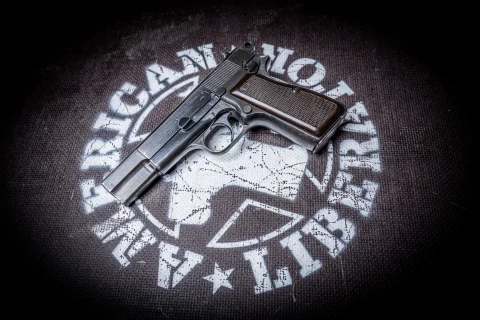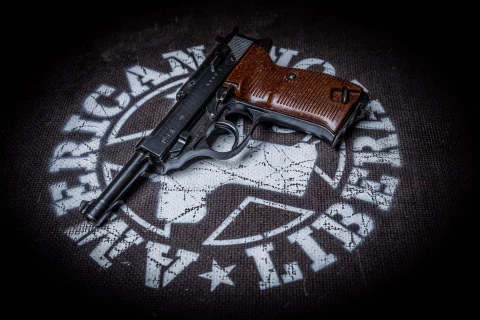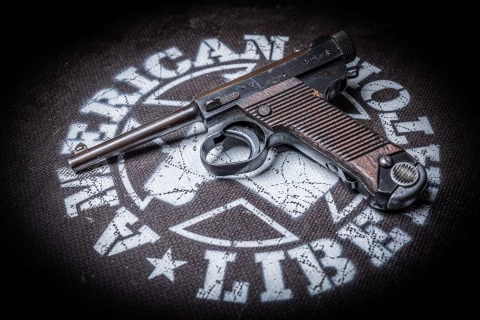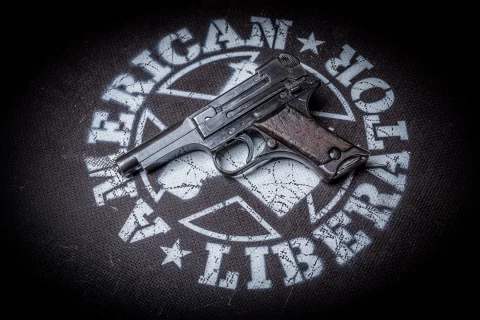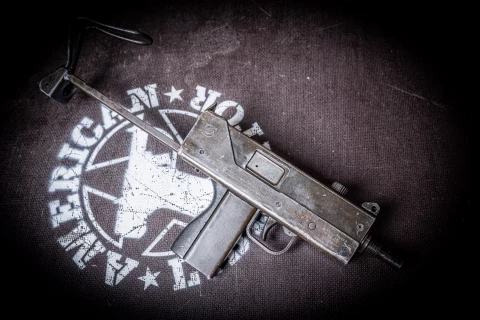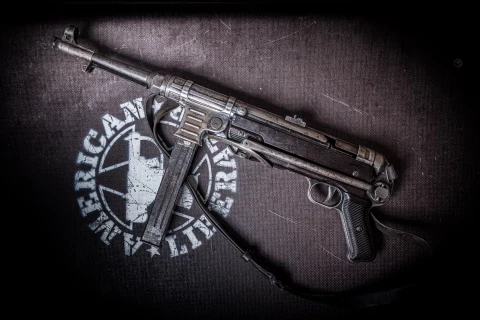- About us
- Photogallery
- Shooting Experiences
- Shooting courses
- E-shop
- Team building
- Shooting ranges
- Museum
- Contacts
FP-45 Liberator
Various weapons were developed and produced during World War II, but some of them stood out for their simplicity and low cost of production. The drive to cheapen and increase production was particularly evident in submachine guns due to press technology. However, the pistol segment was rather marginally affected by these efforts until the end of the war, when experimental designs with bodies and breech blocks made from pressed sheet metal were developed in Germany. However, these projects never reached mass production. On the contrary, the pistol known as the Flare Projector Caliber 45, manufactured by Guide Lamp Corporation, a division of General Motors Corporation, in Anderson, Indiana, was notable for the simplicity of its design.
Originally designated the Flare Pistol M1942, the FP-45 Liberator project was conceived by the U.S. Army Joint Psychological Committee with the idea of creating a simple and inexpensive pistol that could be supplied by air drop to resistance groups in occupied territories. To conceal their true purpose, these weapons were given designations similar to those common to signal pistols and illuminating throwers. Production of the Liberator M1942 pistols by the Guide Lamp Corporation lasted only eleven weeks, specifically from June to August 1942, when about one million units were produced. These pistols were shipped in cardboard boxes along with ten cartridges for each gun and a wooden rod for ejecting the fired cartridges. Each pistol was accompanied by an illustrated instruction booklet designed to be understood regardless of language barriers. The Office of Strategic Services (OSS) took over the distribution of these pistols to the occupied territories of Europe. Although the Liberator never made it into the hands of resistance groups in Europe during the war, it did appear in combat in China, the Philippines and other parts of the Pacific. After the war, many of these pistols were destroyed, although as time has passed, the value of surviving examples has risen and copies have become desirable collector's pieces.
This simple pistol had a molded body welded from two symmetrical halves and a smoothbore barrel with a recessed chamber. The vertically welded breech plate with the upper part serving as a sight had two holes. The inner compartment of the grip was covered by a sliding metal cap and allowed the storage of cartridges. Operation of the gun was simple - just cock the firing pin, insert a round, close the slide and pull the trigger, which cocked the firing pin and started firing. The Liberator pistol was chambered in .45 ACP, was 141 mm long and weighed 450 grams. This weapon was simple, but it fulfilled its role as a cheap means of arming resistance troops in occupied territories effectively. Its history is a reminder of the role that simple and inexpensive designs can play in a wartime environment.
Originally designated the Flare Pistol M1942, the FP-45 Liberator project was conceived by the U.S. Army Joint Psychological Committee with the idea of creating a simple and inexpensive pistol that could be supplied by air drop to resistance groups in occupied territories. To conceal their true purpose, these weapons were given designations similar to those common to signal pistols and illuminating throwers. Production of the Liberator M1942 pistols by the Guide Lamp Corporation lasted only eleven weeks, specifically from June to August 1942, when about one million units were produced. These pistols were shipped in cardboard boxes along with ten cartridges for each gun and a wooden rod for ejecting the fired cartridges. Each pistol was accompanied by an illustrated instruction booklet designed to be understood regardless of language barriers. The Office of Strategic Services (OSS) took over the distribution of these pistols to the occupied territories of Europe. Although the Liberator never made it into the hands of resistance groups in Europe during the war, it did appear in combat in China, the Philippines and other parts of the Pacific. After the war, many of these pistols were destroyed, although as time has passed, the value of surviving examples has risen and copies have become desirable collector's pieces.
This simple pistol had a molded body welded from two symmetrical halves and a smoothbore barrel with a recessed chamber. The vertically welded breech plate with the upper part serving as a sight had two holes. The inner compartment of the grip was covered by a sliding metal cap and allowed the storage of cartridges. Operation of the gun was simple - just cock the firing pin, insert a round, close the slide and pull the trigger, which cocked the firing pin and started firing. The Liberator pistol was chambered in .45 ACP, was 141 mm long and weighed 450 grams. This weapon was simple, but it fulfilled its role as a cheap means of arming resistance troops in occupied territories effectively. Its history is a reminder of the role that simple and inexpensive designs can play in a wartime environment.

